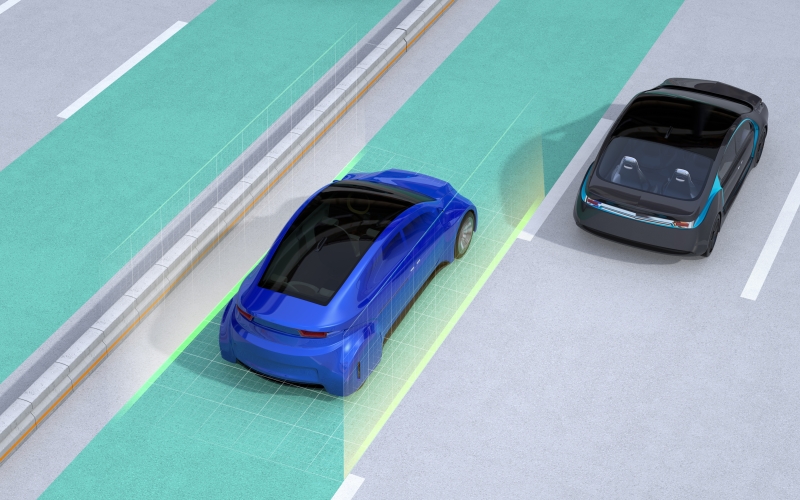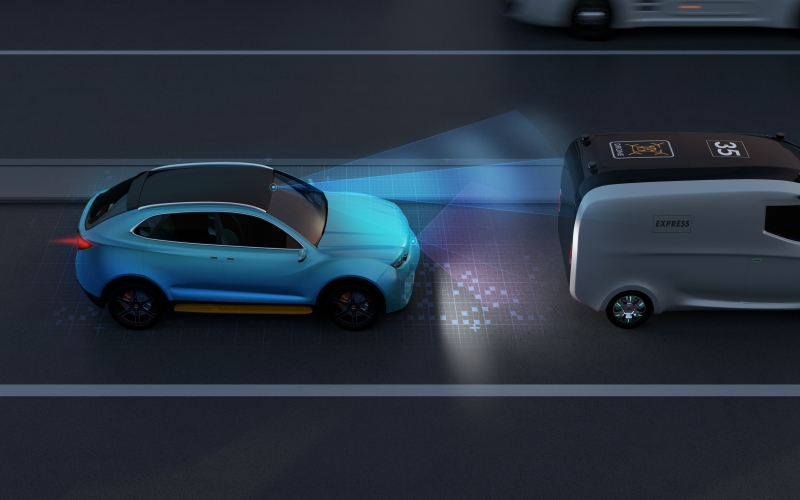Distracted driving has always had an impact on traffic safety, but with the proliferation of cellphones it is an increasing threat to the safety of all road users. According to 2012 US statistics from the USDOT NHTSA, 10% of fatal crashes or over 3,000 deaths can be attributed to driver distraction. This is an alarming statistic, but doubly concerning for fleet managers with multiple vehicles and drivers in their charge. They need technology to minimize the risk of accidents while still ensuring prompt and efficient service to meet their responsibility for the continued safety of the drivers and vehicles under their supervision.
Modern technology has already had a positive impact on vehicle monitoring. Accident investigations following an incident try to determine what happened, who was at fault, and who is liable. The fallibility of eyewitness reports plagues these investigations because even accurate recollections are susceptible to inaccuracies and biases. That is much less of a problem now. With the rapid adoption of affordable dash cams, there is almost always video evidence providing unbiased testimony on what exactly happened during an accident.
Post-accident analysis, although useful, is a poor substitute to preventative action that can identify risk factors ahead of time, rather than waiting for accidents to happen and then cleaning up afterward. New AI technologies offer exactly this, giving live feedback and warnings to drivers of dangerous behavior and providing fleet managers with a comprehensive look at how much distracted driving and how much hazardous driving a driver does. The rest of this article outlines the major capabilities of the AI-powered VIA Mobile360 D700 AI Dash Cam and why they’re necessary.
Lane Departure Warning (LDW)
This technology warns the driver when they are drifting out of their lane. Straddling lanes is typical behavior when a driver is fatigued, distracted, or under the influence of alcohol or drugs. The AI system uses the road markings to determine if the vehicle is moving out of the current lane. The warning does not sound if the indicator light is activated, and will only activate at speeds above 65 km/h, helping the driver avoid a dangerous situation. Fleet managers can use this information to determine the severity of driver fatigue, so their time on the road can be adjusted or if they are engaging in distracted behavior that takes their eyes off the road. This feature is recorded in the vehicle stats but won’t affect the driver score.

Forward Collision Warning (FCW)
The generally accepted safe following distance that accounts for driver response time and sufficient time to slow and avoid a potentially dangerous accident is three seconds. If you’ve ever been tailgated by a “kiss your fender” type, you already know that the three-second rule is not always followed. To ensure that drivers in a commercial fleet drive safely FCW gives audible warnings when the following distance falls below parameters. The VIA Mobile360 D700 sounds an audible warning alert when that distance falls below 1.0s and a critical warning if it drops below 0.6s. The system records the sub-6.0s event in the vehicle stats, and the driver score is adjusted accordingly.

Driver Safety System (DSS)
DSS is a blanket term for a system that uses AI to analyze driver behavior primarily using the internal-facing camera. Currently, the emphasis is on enforcing requirements such as putting on seatbelts or discouraging behaviors like looking at cellphones or tuning the radio while driving. A handful of behaviors fall within the scope of the DSS, some illegal, and some just “careless driving” known to increase the likelihood of a crash.
Eating and drinking while driving is legal but draws driver attention away from the road where it should be, also leading potentially to other surprises such as food or drink falling on their lap and the subsequent reactions that can cause the driver to swerve.
Talking on the phone while driving is prohibited in many places, sometimes even when using a hands-free kit. Texting while driving is illegal almost everywhere. AI dash cams detect the telltale patterns of these actions and issues an alert as a gentle reminder to the driver and adds a record in the driver logs.

As smoking while driving commercial vehicles becomes increasingly restricted throughout the world, fleet operators can use AI dash cams to prevent it with audio alerts when the behavior is detected and notes in the driving logs.
With the integration of increasingly-sophisticated AI technologies like Lane Departure Warning, Forward Collision Warning, and Driver Safety System, AI dash cams like the VIA Mobile360 D700 provide powerful platforms for encouraging safer driving in commercial fleets. By providing rich data on driver behavior for analysis on the cloud, the devices will also enable fleet managers to acquire a deeper understanding of the issues that they need to address in order to make their fleet operations even safer in the years ahead.
VIA Mobile360 D700 AI Dash Cam
The VIA Mobile360 AI Dash Cam is a full-featured, compact dual-camera device with support for Forward Collision Warning, Lane Departure Warning, and an advanced Driver Safety System. The VIA Mobile360 D700 is AWS IoT Core Qualified and AWS Kinesis Video Streams Qualified. It comes with a 30-day free trial of the VIA Fleet Cloud Management Portal powered by Amazon Web Services (AWS), including 50 hours of live streaming with Amazon KVS.
Learn more about the VIA Mobile360 D700 AI Dash Cam here.
You can also check out this short introductory video:
